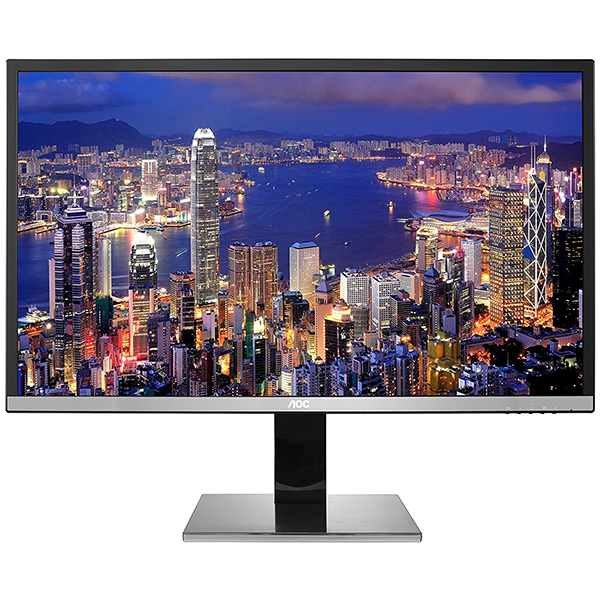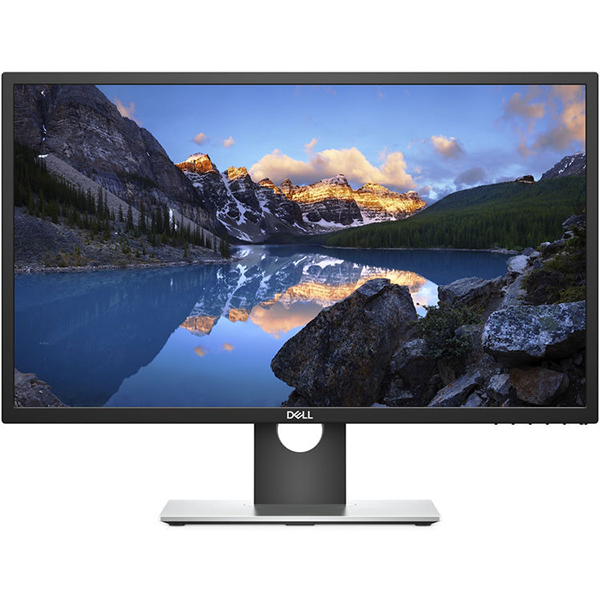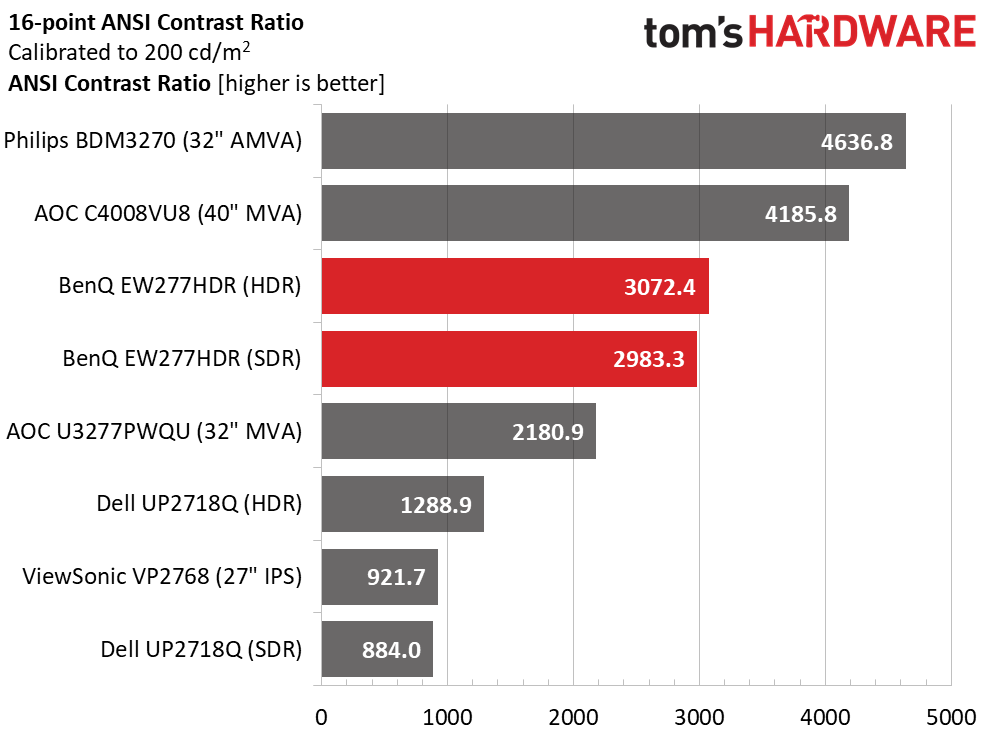BenQ EW277HDR Monitor Review
Why you can trust Tom's Hardware
Brightness & Contrast
To read about our monitor tests in depth, please check out Display Testing Explained: How We Test Monitors and TVs.Brightness and Contrast testing are covered on page two.
Uncalibrated – Maximum Backlight Level
The only other HDR10-compatible monitor we’ve reviewed is Dell’s UP2718Q, so it’s included here. The other screens are professional-grade with factory-certified color and/or extended gamuts. From ViewSonic, we have the VP2768 along with AOC’s C4008VU8 and U3277PWQU. Philips is represented by its BDM3270. The ViewSonic is the lone IPS panel, all the rest use MVA or AMVA parts.
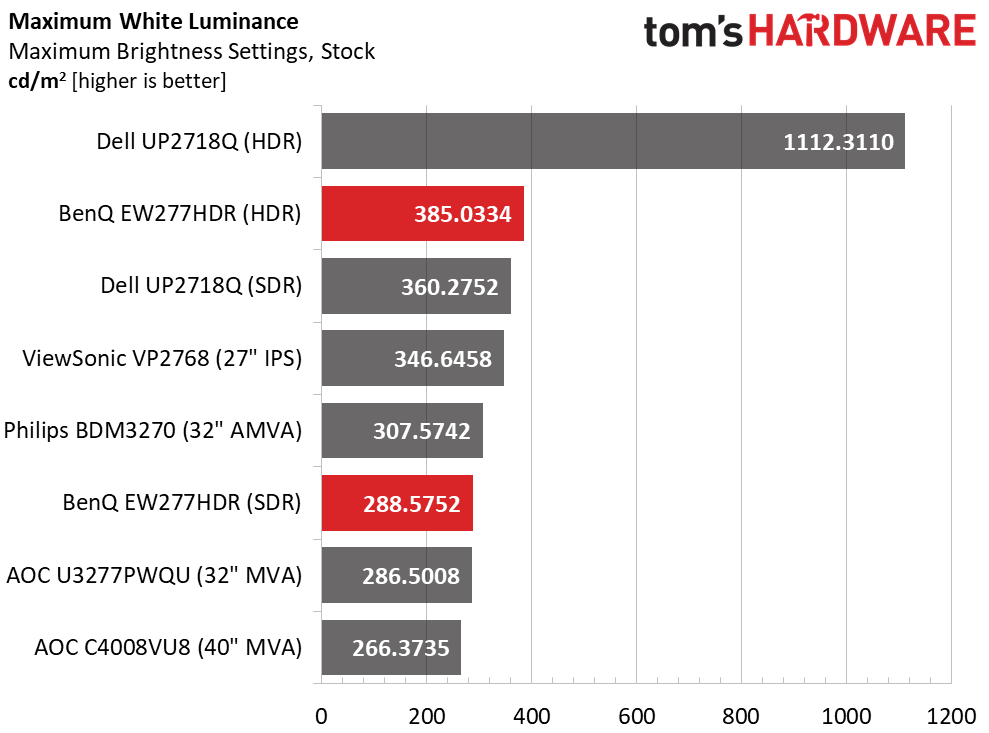
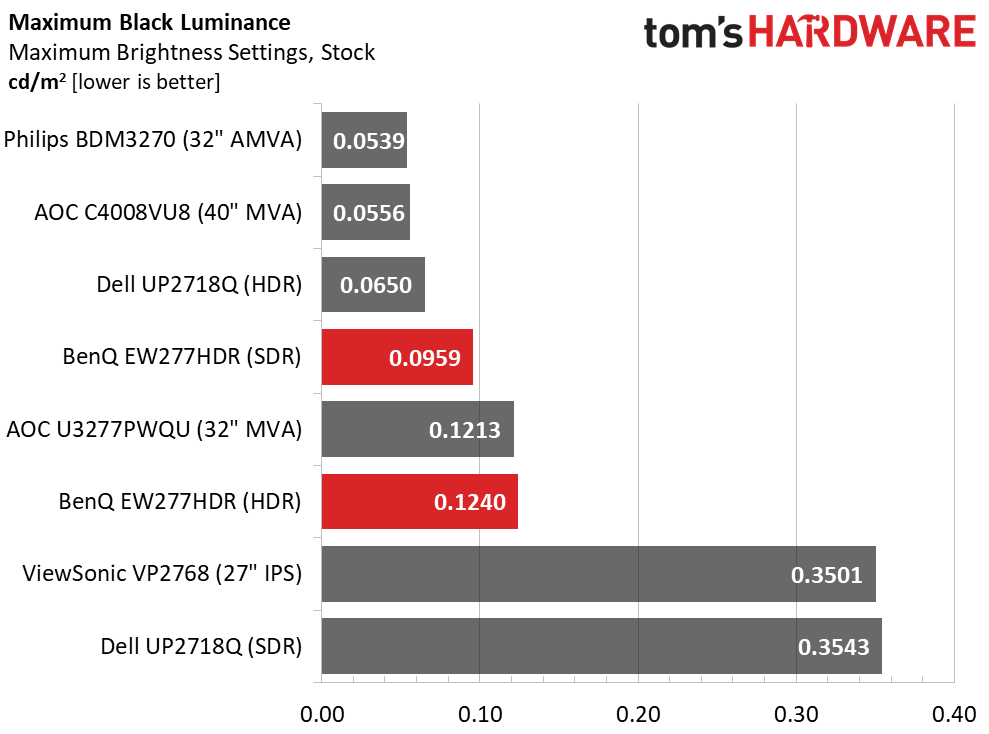
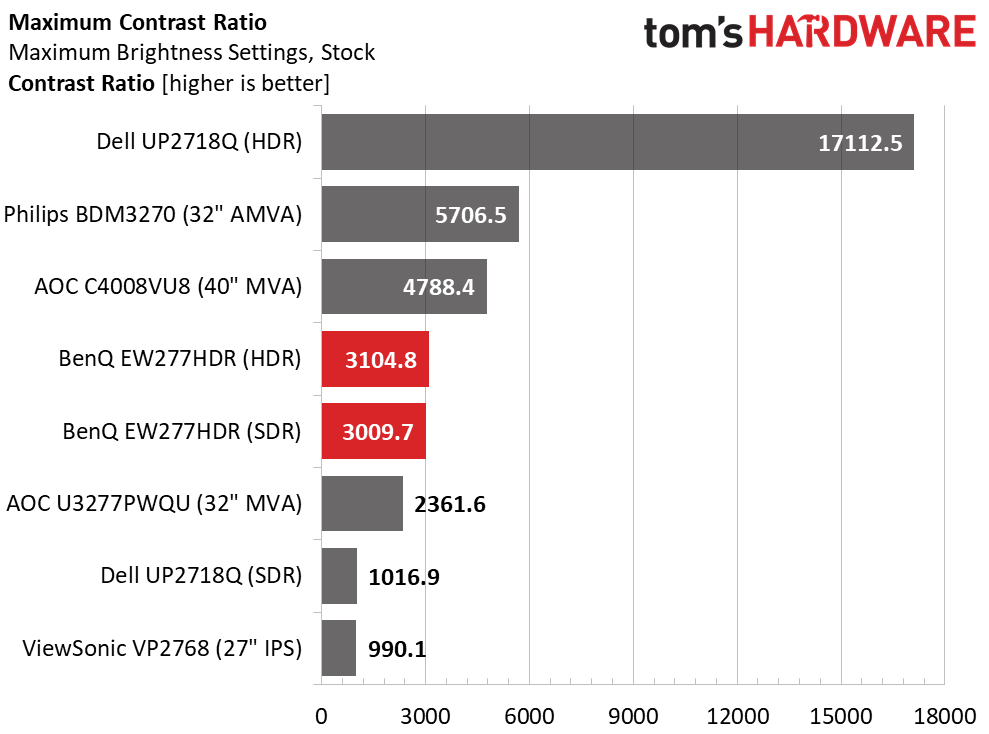
We’ve included the HDR brightness and contrast measurements in the first set of charts because no calibration was performed on the EW277HDR. In SDR mode, it doesn’t quite hit its 300cd/m2 claim. When an HDR10 signal is present, the backlight increases to just over 385 nits, a tad short of the 400 nit spec. Unfortunately, contrast doesn’t increase along with brightness in HDR mode. You’ll see around 3000:1 regardless of signal type. While this is a reasonable level for HDR content, it won’t offer the vast dynamic range of a multi-zone backlight LCD or OLED panel. The upside is that SDR images look fantastic with triple the contrast of typical IPS or TN displays. Those reading this and lamenting the difference between Dell and BenQ should recheck the price points. The UP2718Q sells for around $1500 at this writing.
Uncalibrated – Minimum Backlight Level
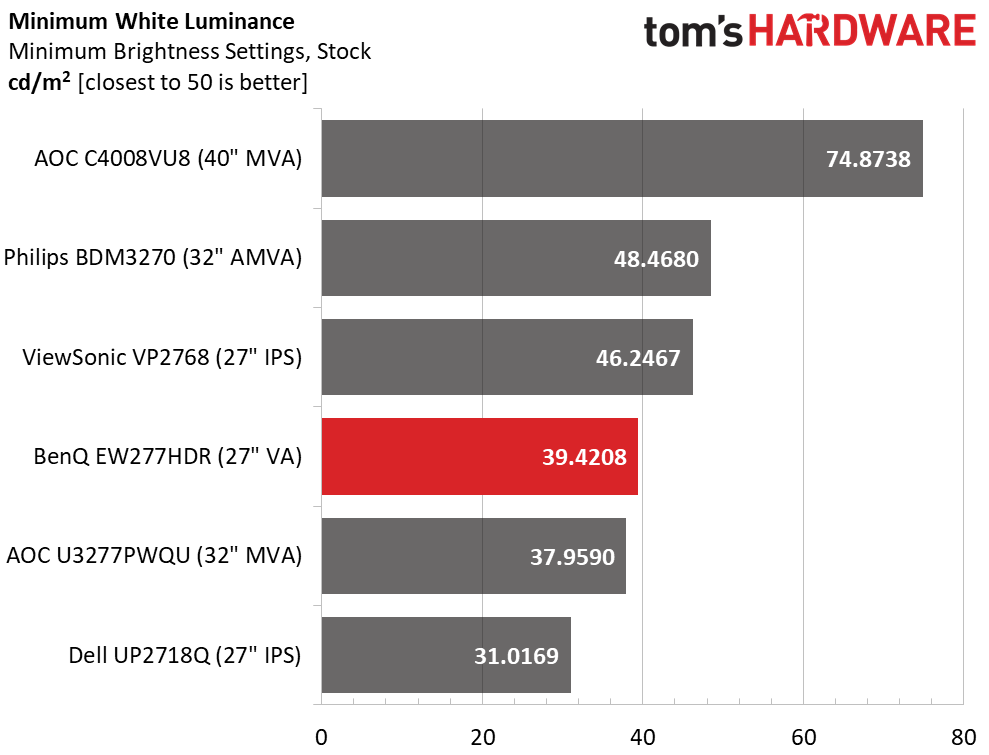
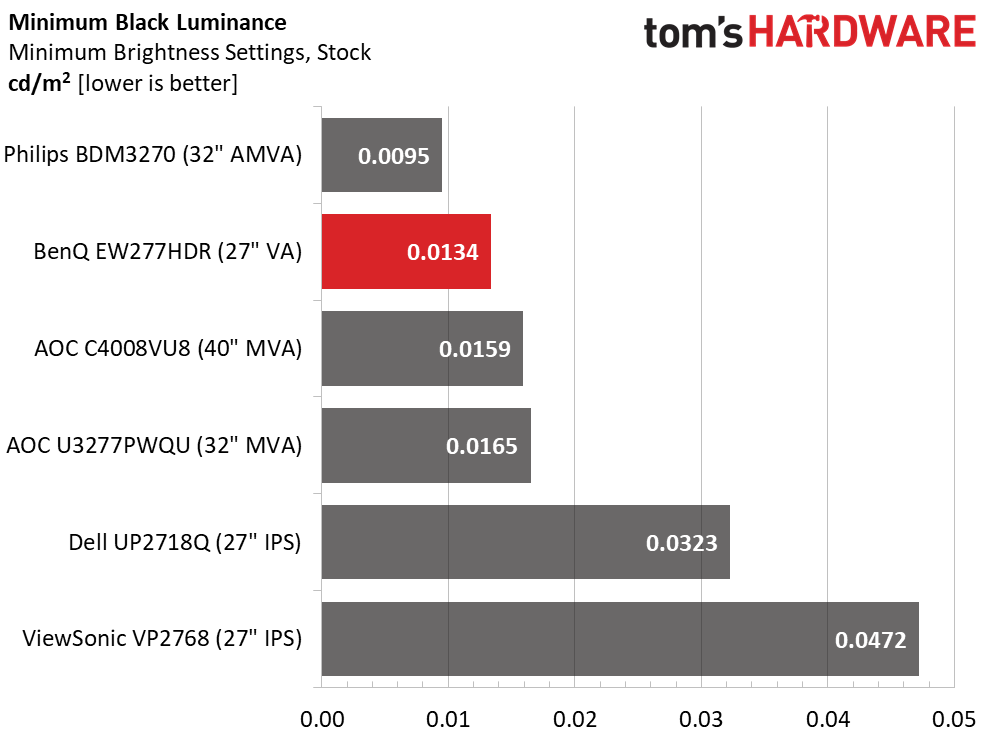
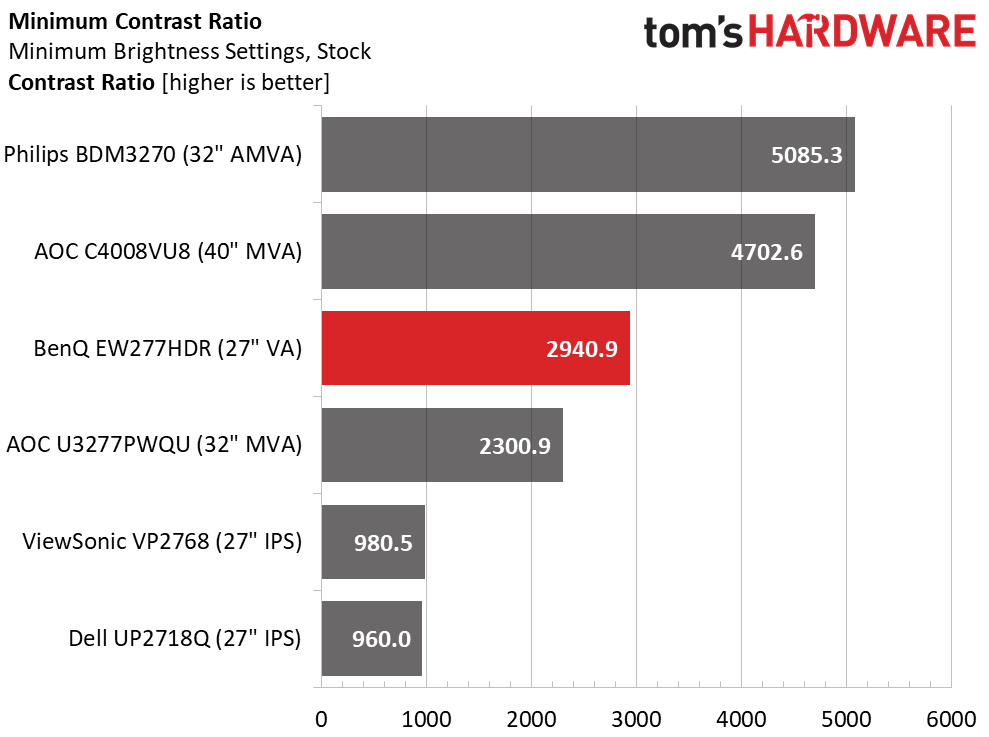
Dropping the EW277HDR’s backlight slider to zero yields around 39cd/m2 output, a little dim for our taste. To achieve a more comfortable 50 nits, set brightness to 4. The excellent black level remains consistent with the output setting, so you’ll see the same 3000:1 contrast regardless of your chosen setting. This is excellent performance.
After Calibration to 200cd/m2
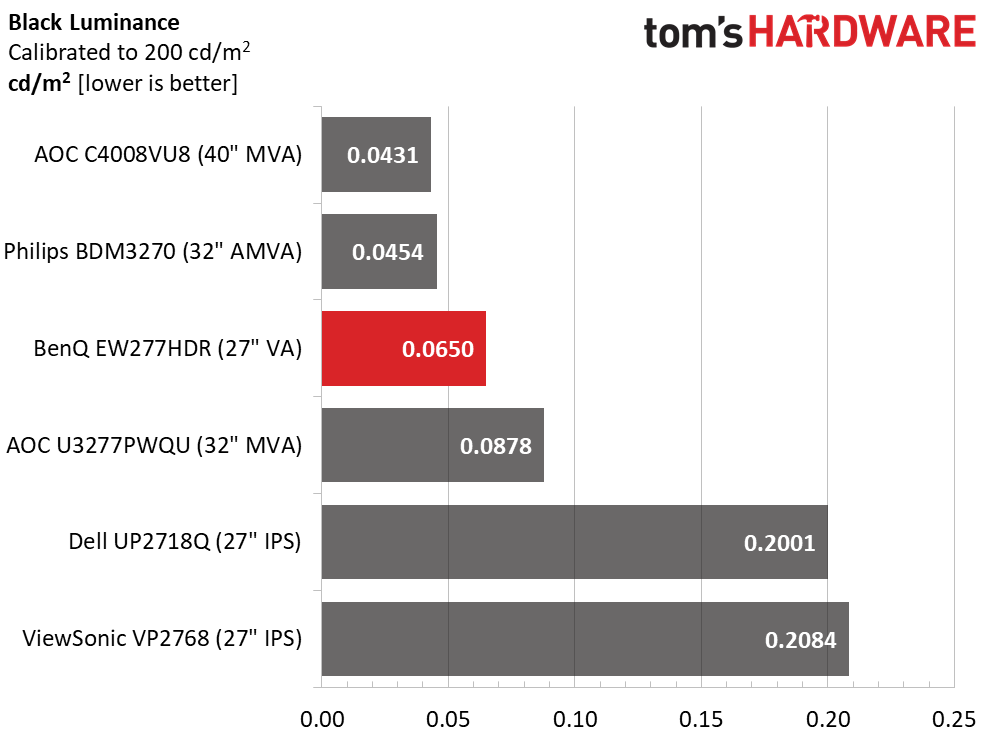
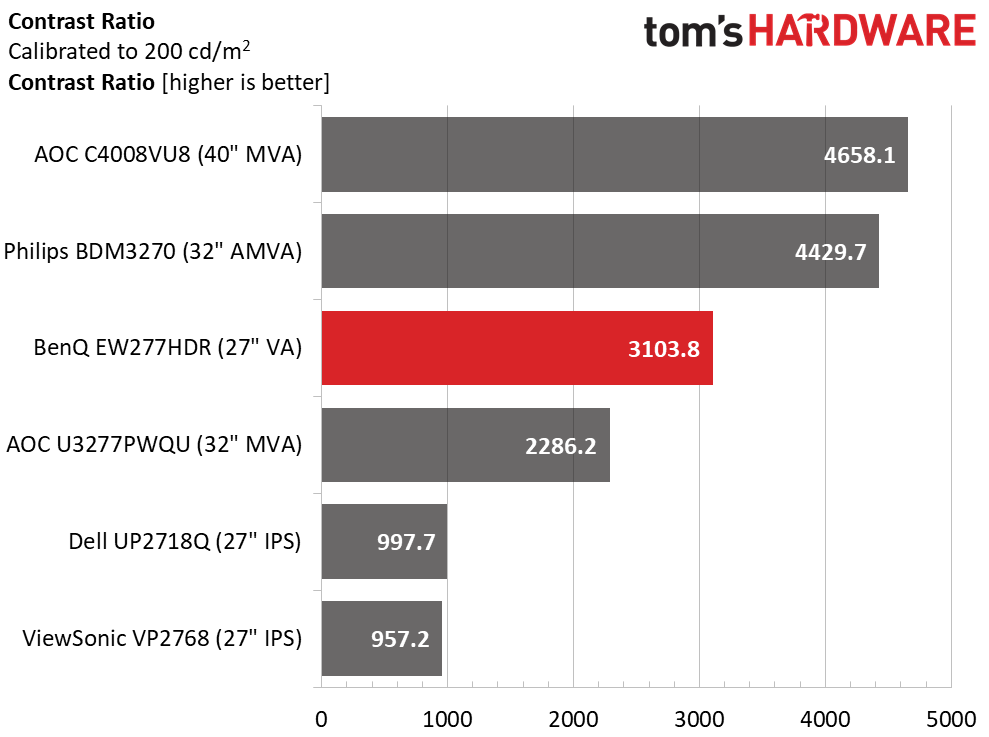
Our calibration consisted only of setting brightness to 200cd/m2 so there is no change in the contrast level for SDR mode. And as we demonstrated in the max output test, HDR also yields the same dynamic range. While we consider the EW277HDR a decent HDR monitor, it is hampered by its edge-array backlight. This is something many HDR-capable displays have in common, so it is by no means a deal-breaker. If you want HDR at a reasonable price, this is the status quo for now. A multi-zone backlight ups the price considerably as Dell has demonstrated.
ANSI Contrast Ratio
ANSI contrast is nearly identical in both SDR and HDR modes. The number is right in step with the sequential result, which indicates excellent panel quality. The EW277HDR sports one of the better VA parts we’ve seen. Despite the low price, BenQ cuts no corners when it comes to image fidelity. And as you’re about to see, color accuracy is exemplary.
MORE: Best Gaming Monitors
Get Tom's Hardware's best news and in-depth reviews, straight to your inbox.
MORE: Best Professional Monitors
MORE: How We Test Monitors
MORE: How To Choose A Monitor
MORE: All Monitor Content
Current page: Brightness & Contrast
Prev Page OSD Setup & Calibration Next Page Grayscale, Gamma & Color
Christian Eberle is a Contributing Editor for Tom's Hardware US. He's a veteran reviewer of A/V equipment, specializing in monitors. Christian began his obsession with tech when he built his first PC in 1991, a 286 running DOS 3.0 at a blazing 12MHz. In 2006, he undertook training from the Imaging Science Foundation in video calibration and testing and thus started a passion for precise imaging that persists to this day. He is also a professional musician with a degree from the New England Conservatory as a classical bassoonist which he used to good effect as a performer with the West Point Army Band from 1987 to 2013. He enjoys watching movies and listening to high-end audio in his custom-built home theater and can be seen riding trails near his home on a race-ready ICE VTX recumbent trike. Christian enjoys the endless summer in Florida where he lives with his wife and Chihuahua and plays with orchestras around the state.
-
AgentLozen This seems like a good 2nd monitor to have if you're a gamer. It looks like it would work just fine for gaming but it's missing features like GSync or 120+hz that would elevate it to true gaming levels.Reply -
cwolf78 My 4K HDR TV has ruined me from gaming on my ASUS 144 Hz TN gaming monitor. To me, the reduced motion blur doesn't make up for seeing jaggies everywhere (24" 1080p) and the muted color reproduction. This BenQ monitor would be more tempting if it were QHD or 1080p at 21 or 22" and supported Gsync.Reply -
WyomingKnott I don't understand the color charts at all. Delta E of up to ten being praised? What am I missing?Reply -
gdmaclew The Amazon specs list it as having HDMI, VGA and DisplayPort inputs, which it obviously doesn't have.Reply

